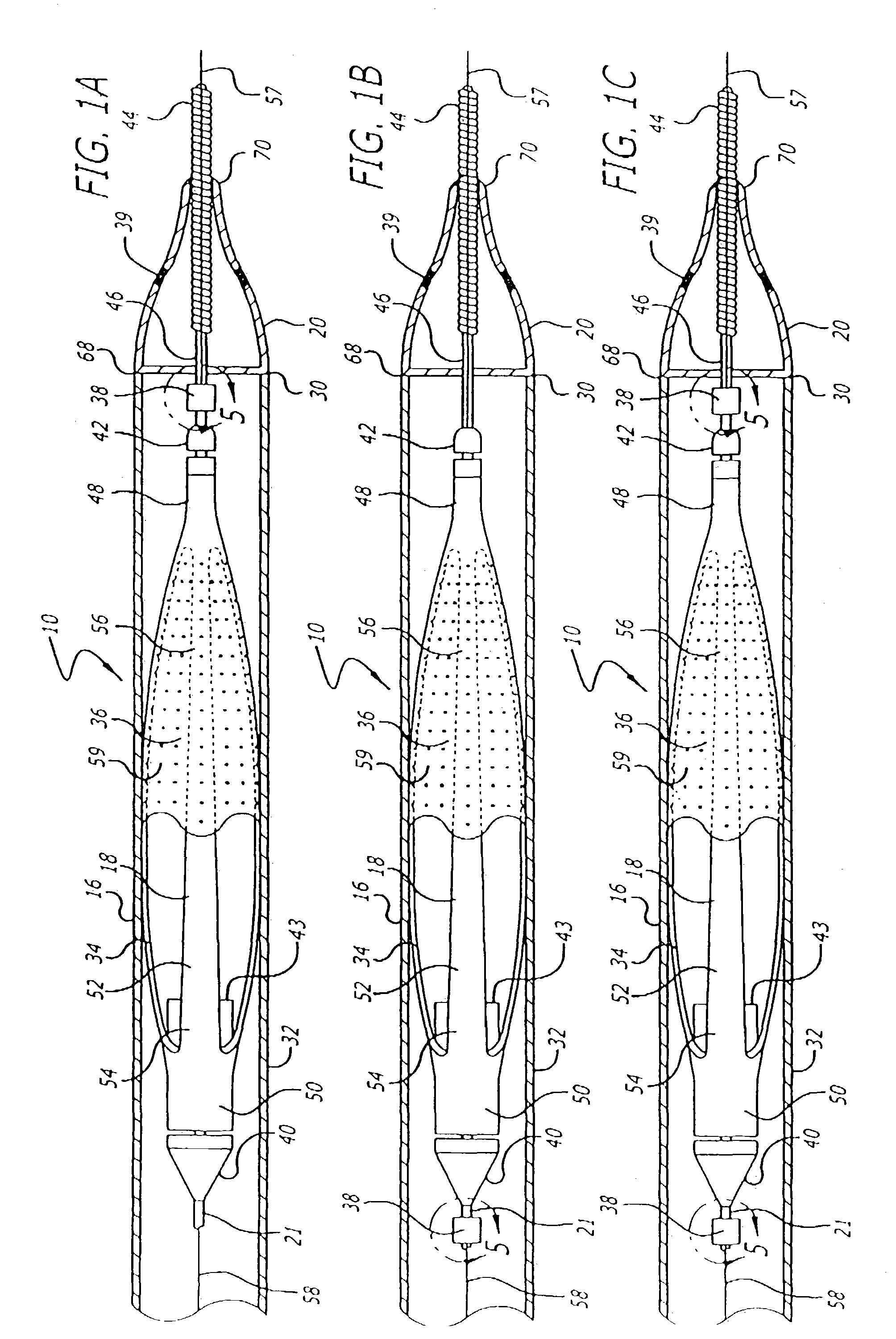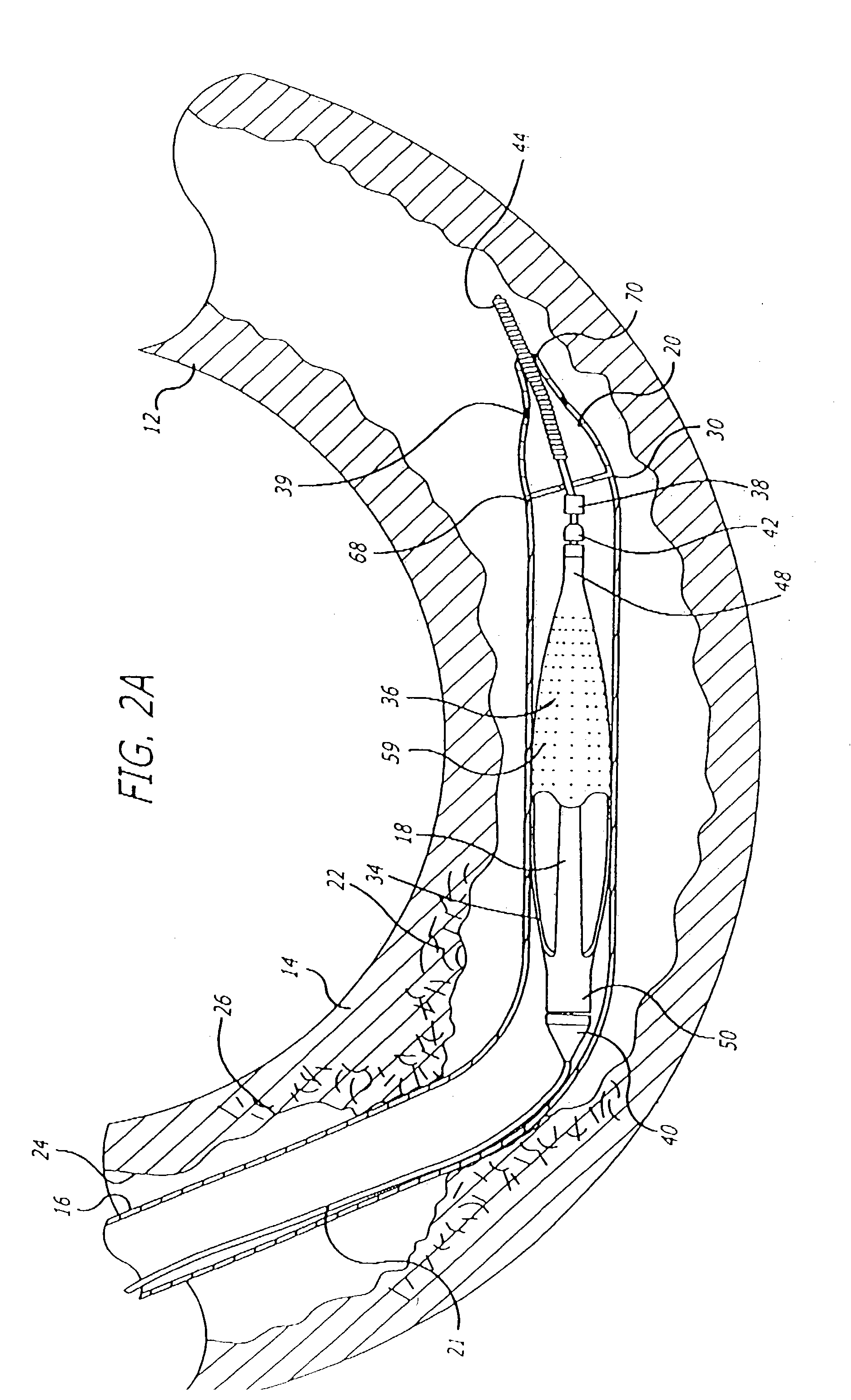Hinged short cage for an embolic protection device
a protection device and short cage technology, applied in the field of improved embolic protection devices, can solve problems such as the tendency of cages to partially collaps
- Summary
- Abstract
- Description
- Claims
- Application Information
AI Technical Summary
Benefits of technology
Problems solved by technology
Method used
Image
Examples
Embodiment Construction
[0034]The present invention is directed to an improved filtering device and system for delivering, deploying, and removing the filtering device to facilitate efficient and effective performance of an interventional procedure in a body vessel. The filtering device filters the blood in the body vessel in order to pass blood therethrough while capturing embolic material released into the body vessel during the interventional procedure. Additionally, the filtering device is adapted to enable an expandable cage and filter to freely expand in the body vessel from an unexpanded state. Moreover, the filtering device facilitates placement and deployment of an expandable cage and filter in a body vessel having sharp bends without loss of apposition between the deployed cage and the vessel wall. The system is adapted to facilitate delivery and deployment of the filtering device to a location distal to an interventional procedure site. Additionally, the system is adapted to remove the filtering...
PUM
 Login to View More
Login to View More Abstract
Description
Claims
Application Information
 Login to View More
Login to View More - R&D
- Intellectual Property
- Life Sciences
- Materials
- Tech Scout
- Unparalleled Data Quality
- Higher Quality Content
- 60% Fewer Hallucinations
Browse by: Latest US Patents, China's latest patents, Technical Efficacy Thesaurus, Application Domain, Technology Topic, Popular Technical Reports.
© 2025 PatSnap. All rights reserved.Legal|Privacy policy|Modern Slavery Act Transparency Statement|Sitemap|About US| Contact US: help@patsnap.com



